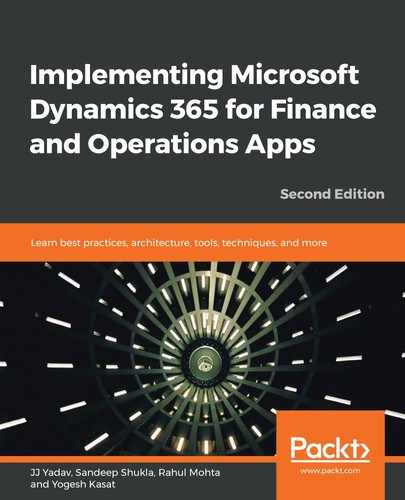Bring your own database (BYOD) is a feature in Finance and Operations that lets administrators configure their own Azure SQL database, and then export one or more data entities that are available in the application into the database. The BYOD feature uses the Data Import/Export Framework (DIXF) to export all records (full push) or only those records that have changed or been deleted (incremental push).
The following diagram shows this concept at a high level and how BYOD can be used in enterprise-grade data warehouse scenarios:

As shown in the preceding diagram, the BYOD feature lets you export incremental data in your own Azure SQL database. Customers can further integrate BYOD data into their own enterprise data warehouse solution, along with other data sources, including on-premise data, and then build Power BI reports. These Power BI reports can be deployed to the Power BI service and then embedded back into Finance and Operations analytical workspaces or consumed directly using the Power BI service.
The important thing to note here is that the Entity store stage aggregates measurements, and with BYOD, you can export data entities. There are thousands of data entities out of the box in Finance and Operations that you can use to perform exports. In many scenarios, out of the box, data entities do not cover every reporting and analytical scenario, so you may have to develop custom data entities to fill the gaps.
For large enterprise customers, the BYOD feature solves many key scenarios, some of which are as follows:
- Scheduled incremental data exported to your own Azure SQL database.
- You can bring external data into the BYOD database and use it for BI and reporting.
- BYOD data can also be used for third-party integration or integration with your existing data warehouse system.
Despite these advantages, the following are some key challenges with BYOD:
- BYOD uses the Finance and Operations batch framework for schedule and export data and when you have lots of data entities to export, this puts an extra load on your transactional system.
- You have to manage and monitor BYOD export jobs.
- You have to pay for the Azure SQL database in order to have storage and compute. This can become expensive as the size of the database grows. In addition, if you're exporting high-volume transactional tables on a frequent basis, you might have to provide a higher compute database tier.
So, what are the alternatives? In the next section, we'll explore how Microsoft is moving the relational databases on the Entity store and BYOD to Azure Data Lake.
